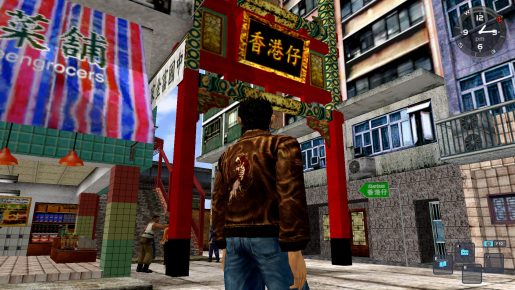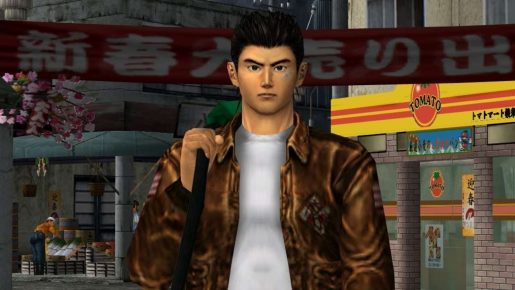Shenmue I & II are among the games I enjoyed most on the Sega Dreamcast. Both titles brought vivid memories and the news of a remaster was so overwhelming I couldn’t be contained. With Shenmue III set to release in August 2019, there’s no better way to relive and prepare fans, and of course myself, for the upcoming follow-up title than to play these classics in glorious HD. With all of the improvements and changes Sega did to the game to make it more appealing to modern gamers, is the remastered edition worth investing your money and precious time?
The story of Shenmue I & II starts off with Ryo Hazuki witnessing his father being killed by the Chinese crime lord who calls himself as Lan Di and him stealing the mysterious Dragon Mirror. The unfortunate tragedy that happened opens up so many unanswered questions as to why his father was killed and his connection to the dragon mirror. Ryo then sets on a journey to seek for answers as he travels across Japan until he ends up in Hong Kong, in which Shenmue II takes place. For the most part, players will spend most of their time talking to people in towns seeking for answers until you eventually end up fighting people with brawling combat and quick time events.
With the game being released almost two decades ago, the pacing of both games are rather slow compared to games in this generation like in Yakuza. As Ryo journeys throughout Japan and Hong Kong, there will be a time limit that you have to keep in mind while playing. One of the features of the game is having a night and day cycle and four seasons that changes in-game. Ryo will have to keep the pacing on rather than goofing around in the city or face the consequence of achieving the bad ending in both games. In Shenmue I, Ryo must do what he has to do by Spring time where in Shenmue II he’ll have until Summer. While there is a time constraint involved, Ryu has the freedom to do whatever he wants in the game.
Aside from seeking answers about the death of his father and the mysterious dragon mirror, Ryo can take a detour from his long winded journey and have fun in-game to lax around. Since he will be getting a stipend from Ine-san on an occasional basis, Ryo will have the luxury of spending it and playin all day at arcade machines, buying groceries, or aiding people in need. The outcome of the game and the fate of Ryo’s journey rests entirely in your hands.

As far as combat goes, it’s a brawling game where Ryo will have a set of moves that you have to master. The moves that Ryo can do varies and ranges from punches, kicks, throws, combos and parries. Since the game is about two decades old, don’t expect the combat system to be solid compared to Sega’s other games like Yakuza. Back then, the stiffness and clunky movements are what’s best already but comparing it to this generation, it’s rather annoying and not up to standard. If you are picky or rather get irritated by not-so-smooth combat, you have been warned with this game.
To have a sense of variety in combat, Ryo has an opportunity to learn flashy moves throughout the course of the game. As he ventures through Japan and Hong Kong, there will be martial arts masters that will teach Ryo deadly moves and scrolls that will definitely aid him in fending off Lan Di’s men. As it takes time to master a skill or a combo, there’s always dojos or trainers that Ryo can spar with – which is recommended as the more you master the combos, the more competent Ryo becomes in battle.
In addition to brawling, the game also has quick time events where a series of button prompts appear at certain action scenes. The outcome of the action sequences will ultimately depend on how successful you are pushing the correct button prompts that flash on the screen. Back then, this was forgivable and a feature that everyone finds interesting but since quick time events have been appearing more in games today, this is something that some people may be turned off to.
One of the factors of Shenmue I & II is to entice the new generation of gamers with the improved visuals of the game. Comparing it to the original release, the remastered version sure have improved in terms of visuals but not in a long mile. While it’s not a total makeover where they overhaul everything, the visuals have been polished up – making it look a little bit more detailed and not all pixelated compared to the original release – though its age can clearly be seen at any angle.

For an open-world game, both Shenmue I & II offers environments and settings that look vibrant and lively. In Shenmue I, you will be exploring the rural areas of Japan whereas in Shenmue II, you will be in the bustling city of Hong Kong. The design of the cities and suburban areas feel real enough that players will pique their interest to investigate every nook and cranny to uncover more secrets in the game.
In every re-release of games that developers do for other games, the aspect ratio for the game itself is maintained at 16:9 and with cutscenes at 4:3. In the case of Shenmue I & II, it follows suit but it’s rather disappointing that whenever I watch a cutscene, there’s black bars on the side. It’s not a really big issue as the cutscenes still looks good enough. If there’s one thing that is really an issue with this remaster, it’s the dialogue. Sure, the quality of the voice overs are retained and the added Japanese and English option are a plus but everything about it sounds muffled. As for its soundtrack, it’s beautiful and a pleasure to listen to from beginning to end – especially at some of its emotional moments.
Controls have also been slightly improved in both games. With an option to change it at the settings, those who are not accustomed to the old controls back in the Sega Dreamcast days can change it but in all honesty, I prefer the original one despite its weirdness in controlling Ryo.
Verdict
Shenmue I & II are two great games that allow players to experience just before the sequel releases late next year. There might not be much for returning fans, besides nostalgia or as a refresher, but they’re good enough for that to be more than enough. While I doubt many have played the original Dreamcast releases, the sequel likely piqued the interest of many. Sure, the game is two decades old and it has aged, but if you can get past the shortcomings, you are in for great storytelling and an enjoyable brawling experience. For a remastered release, it’s the best one and certainly good enough to warrant a purchase.
[Editor’s Note: Shenmue I & II was reviewed on the Xbox One platform and partly on PS4. The game was provided to us by the publisher for review purposes.]
